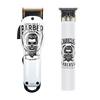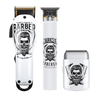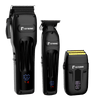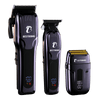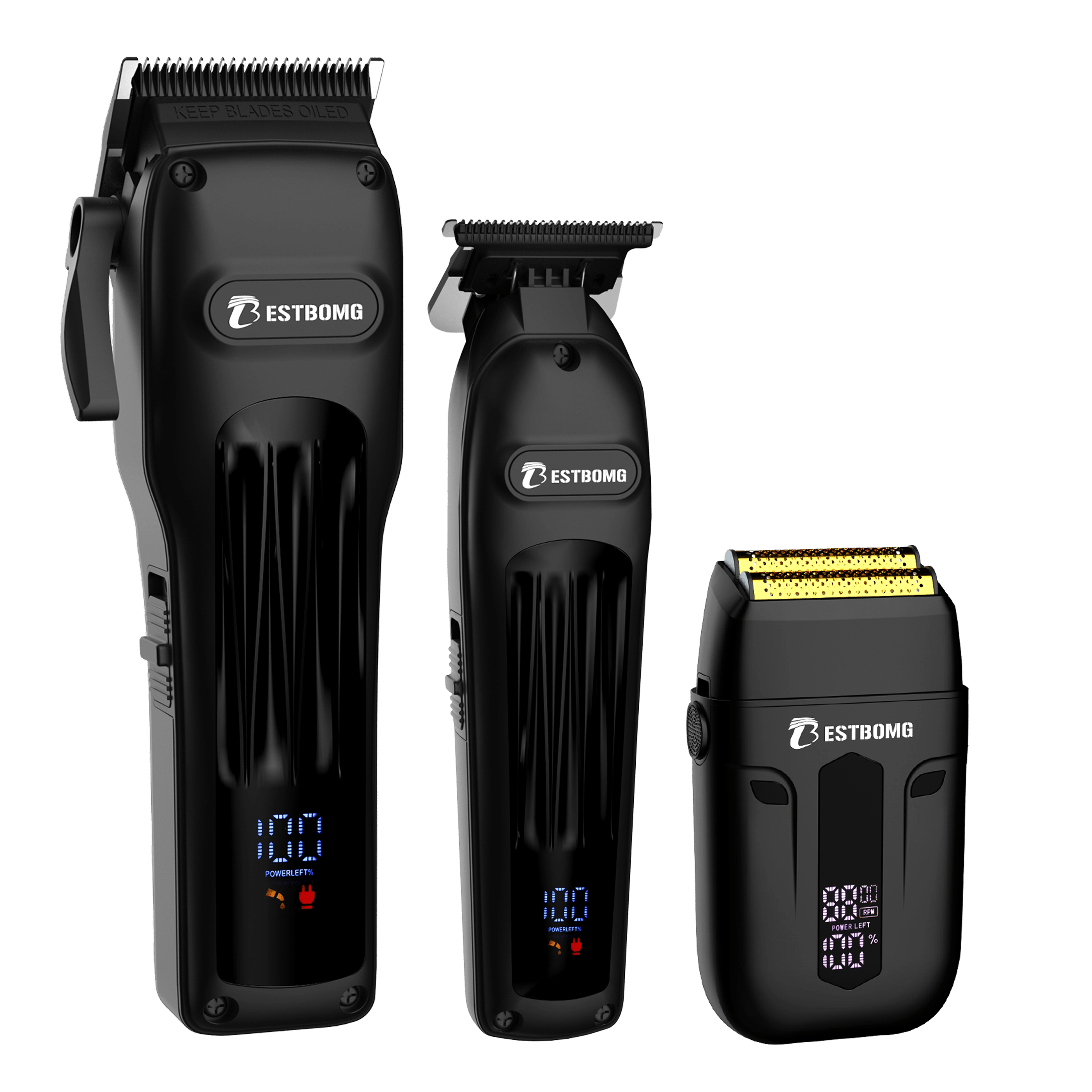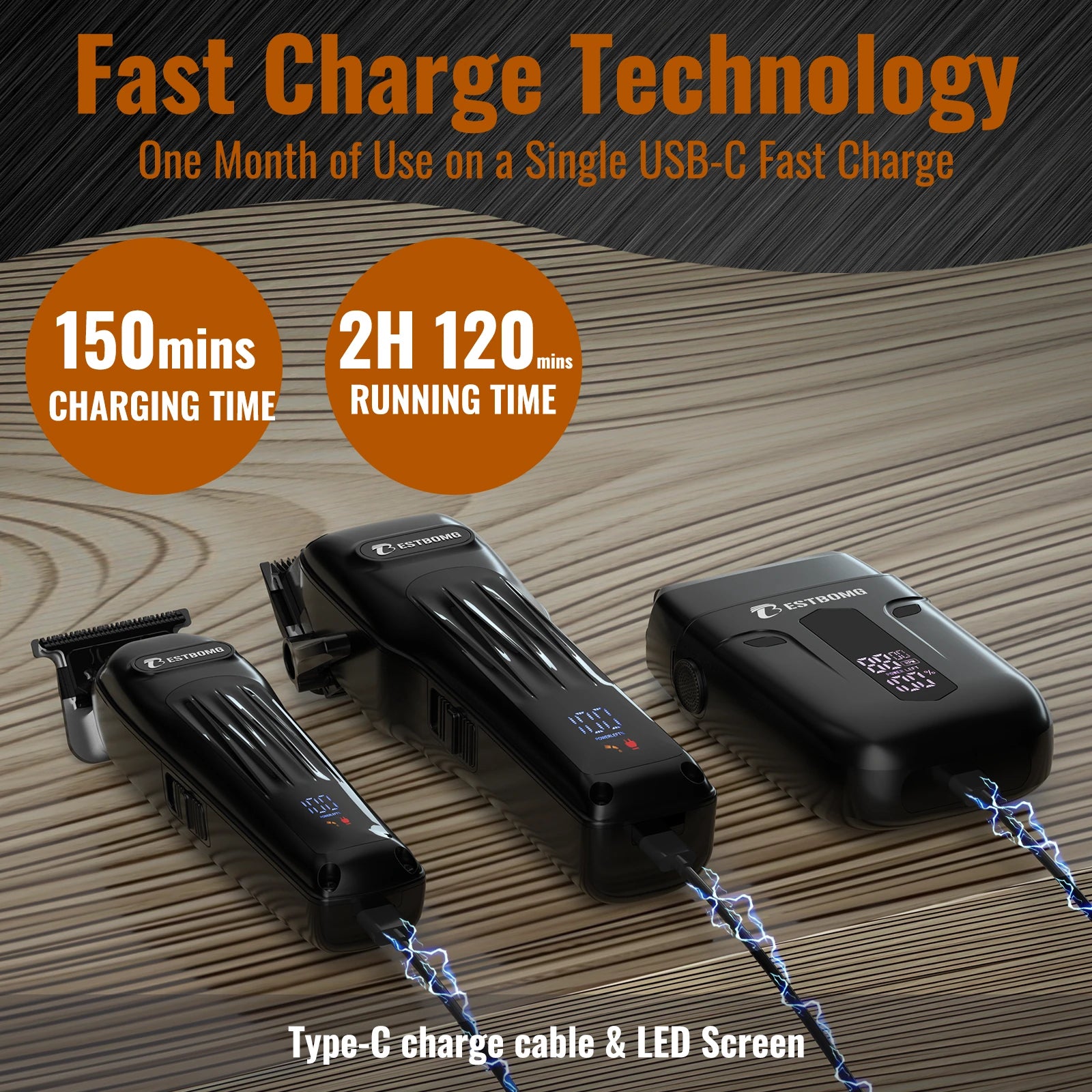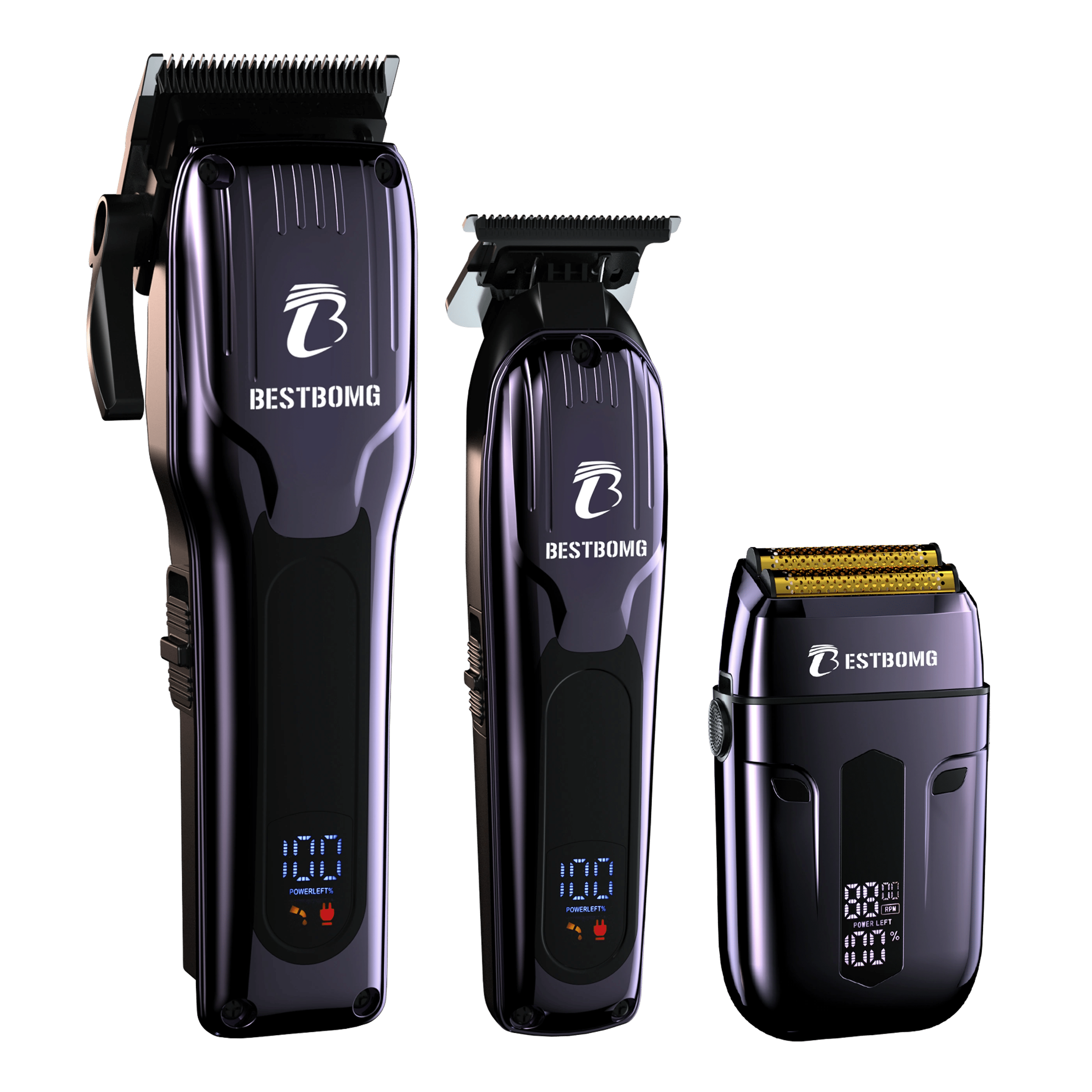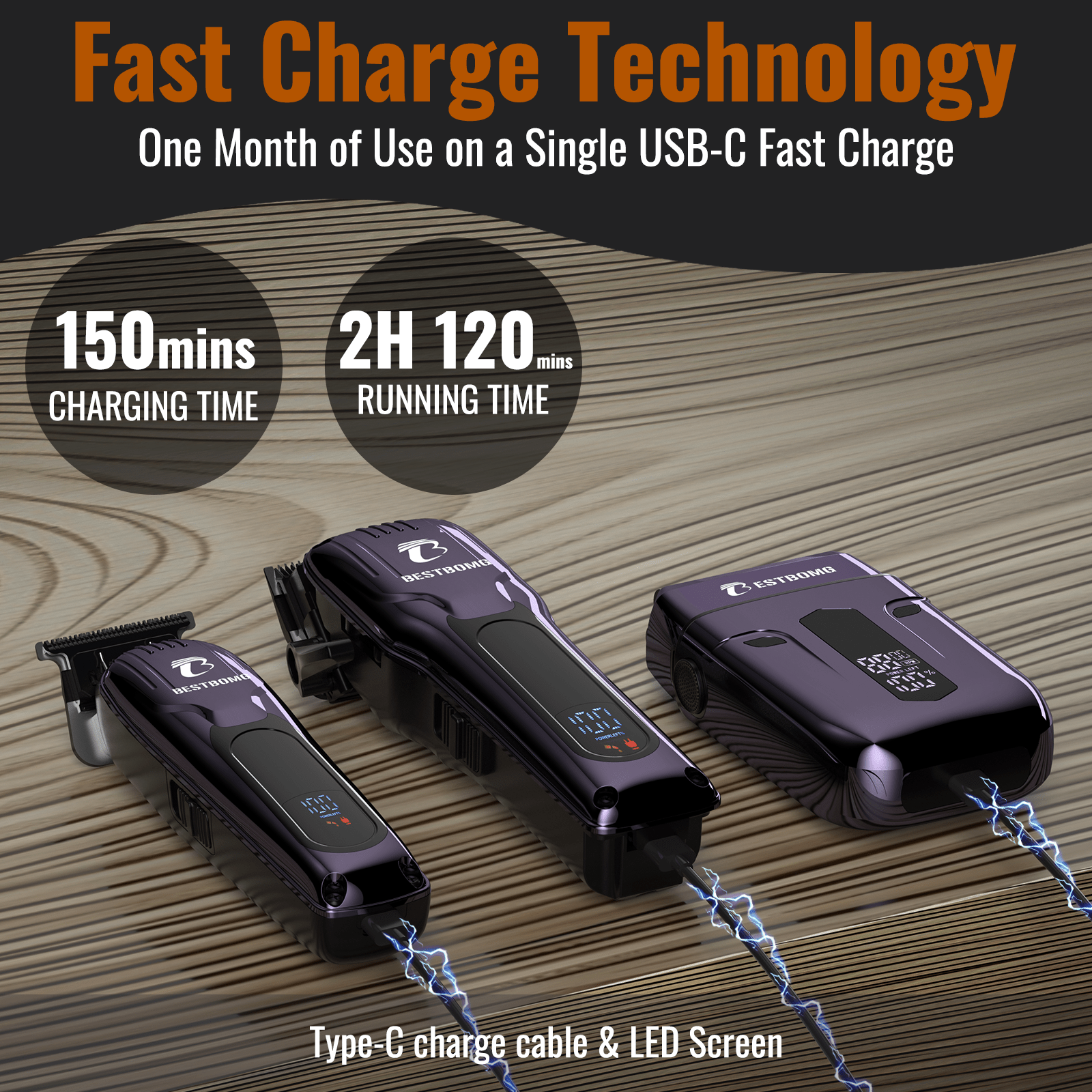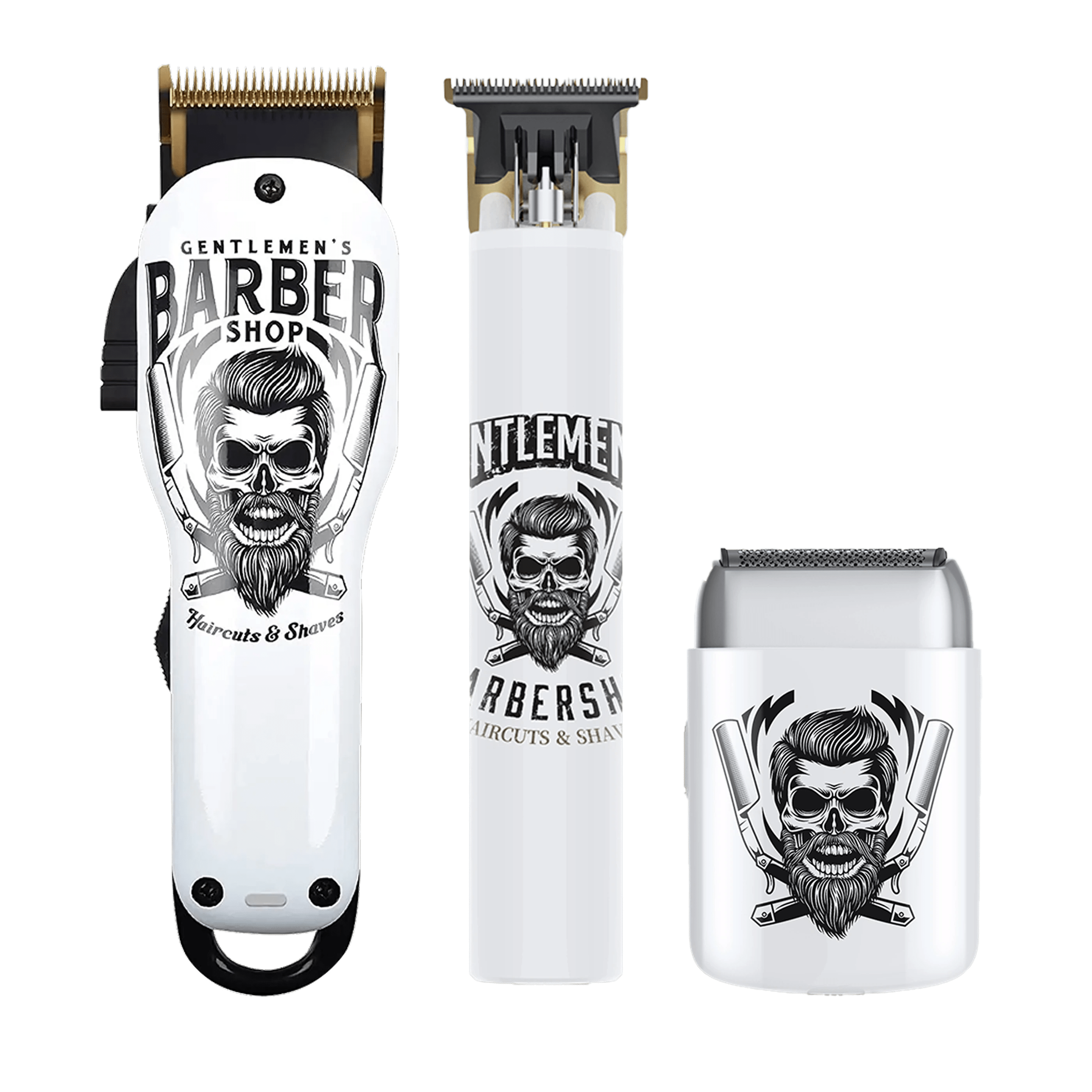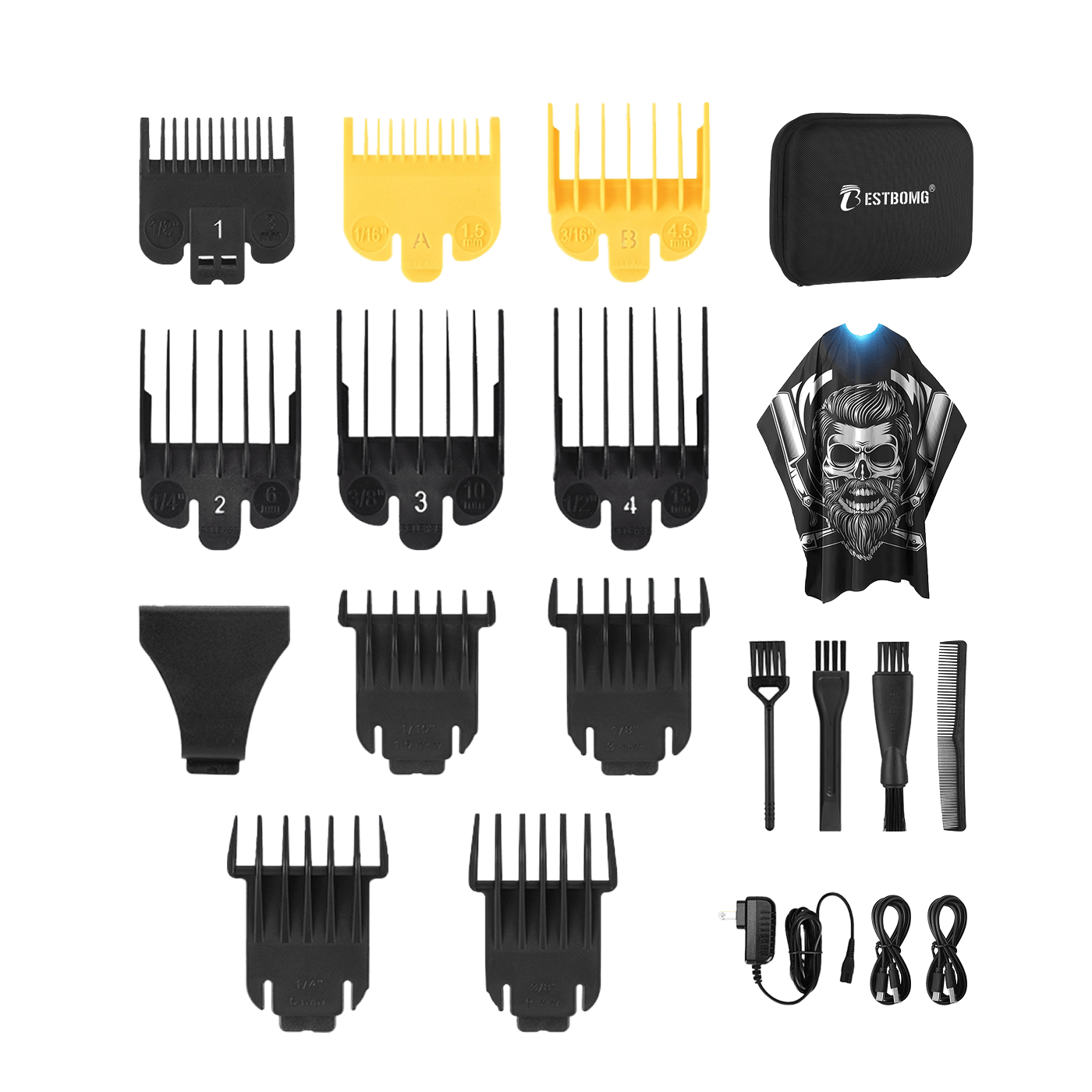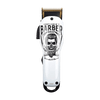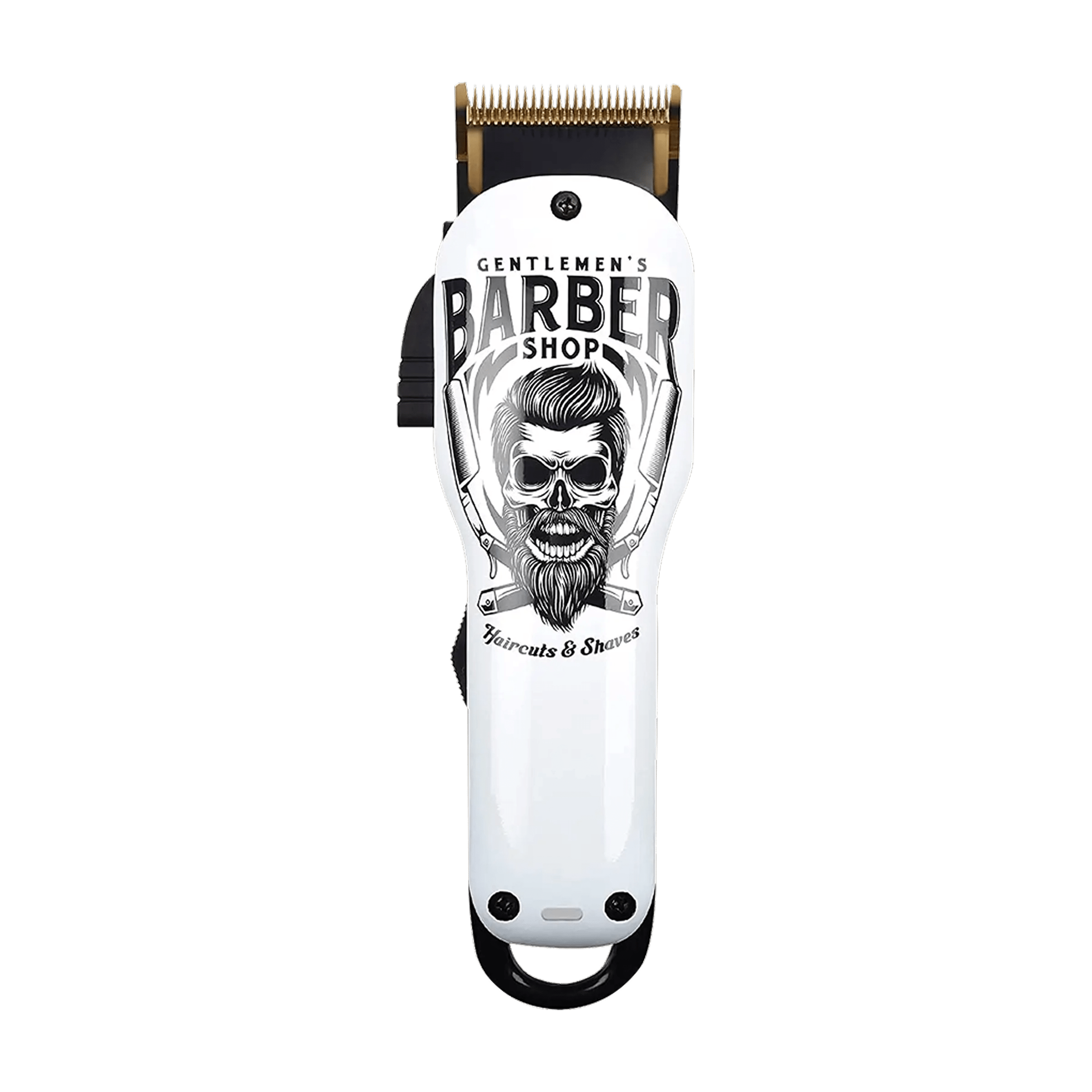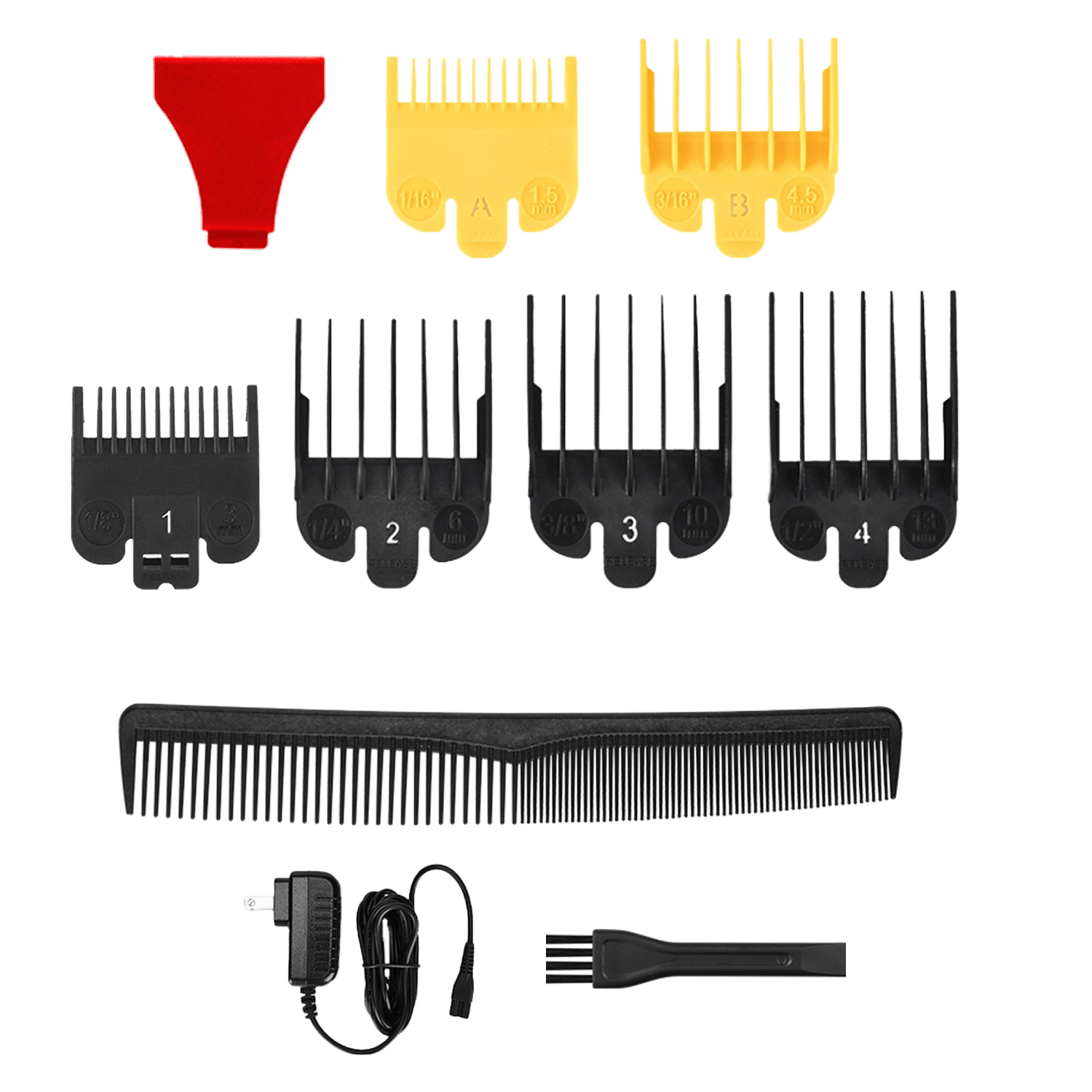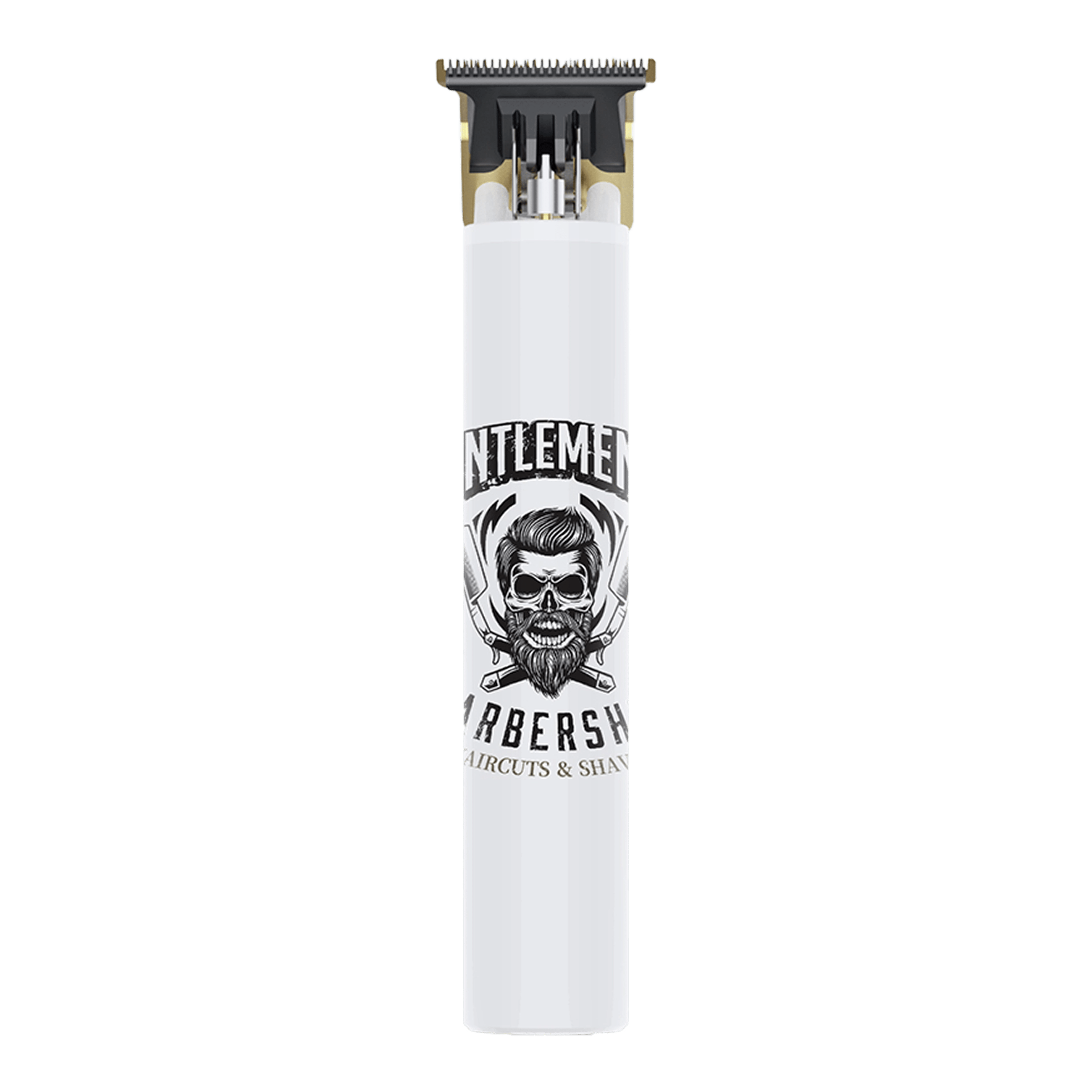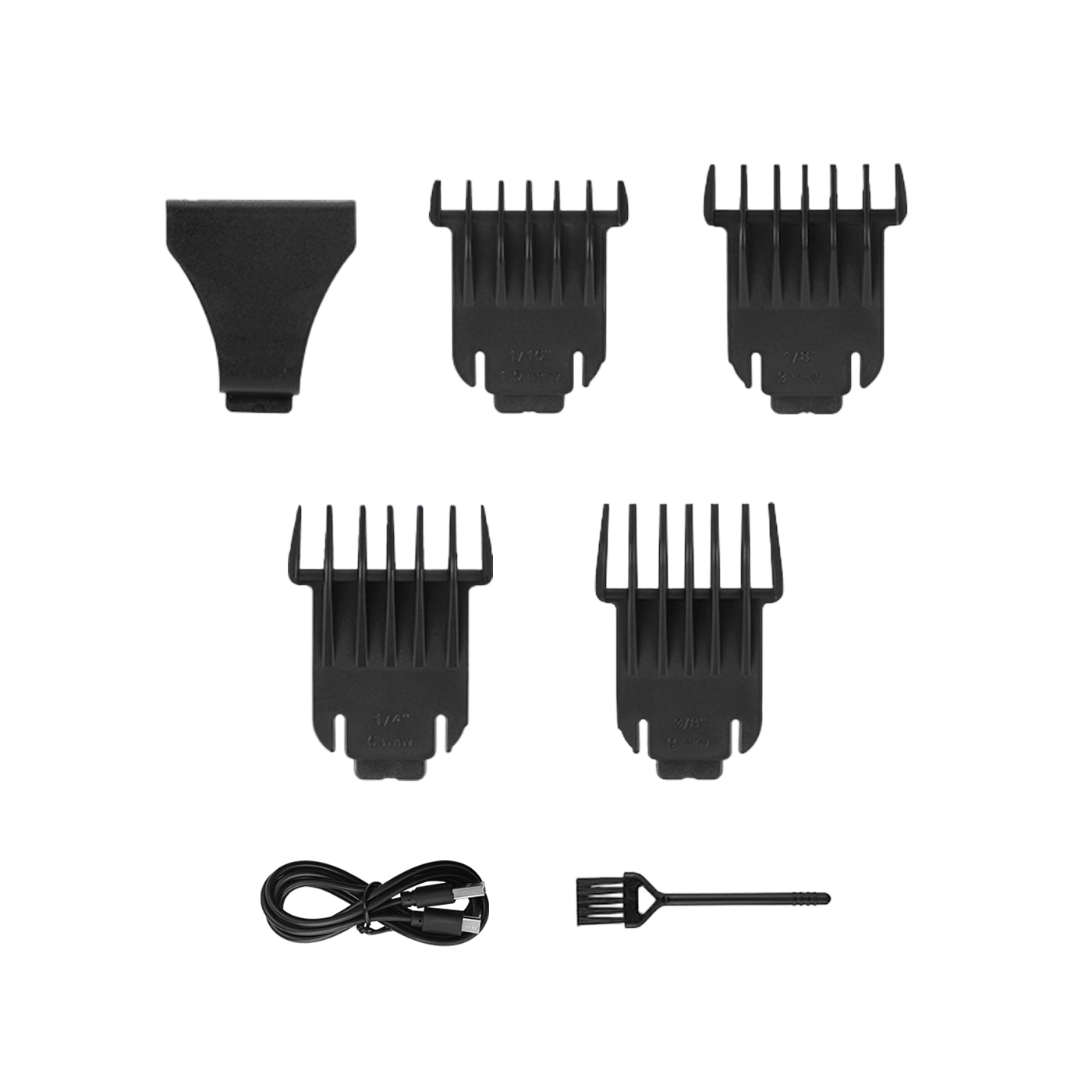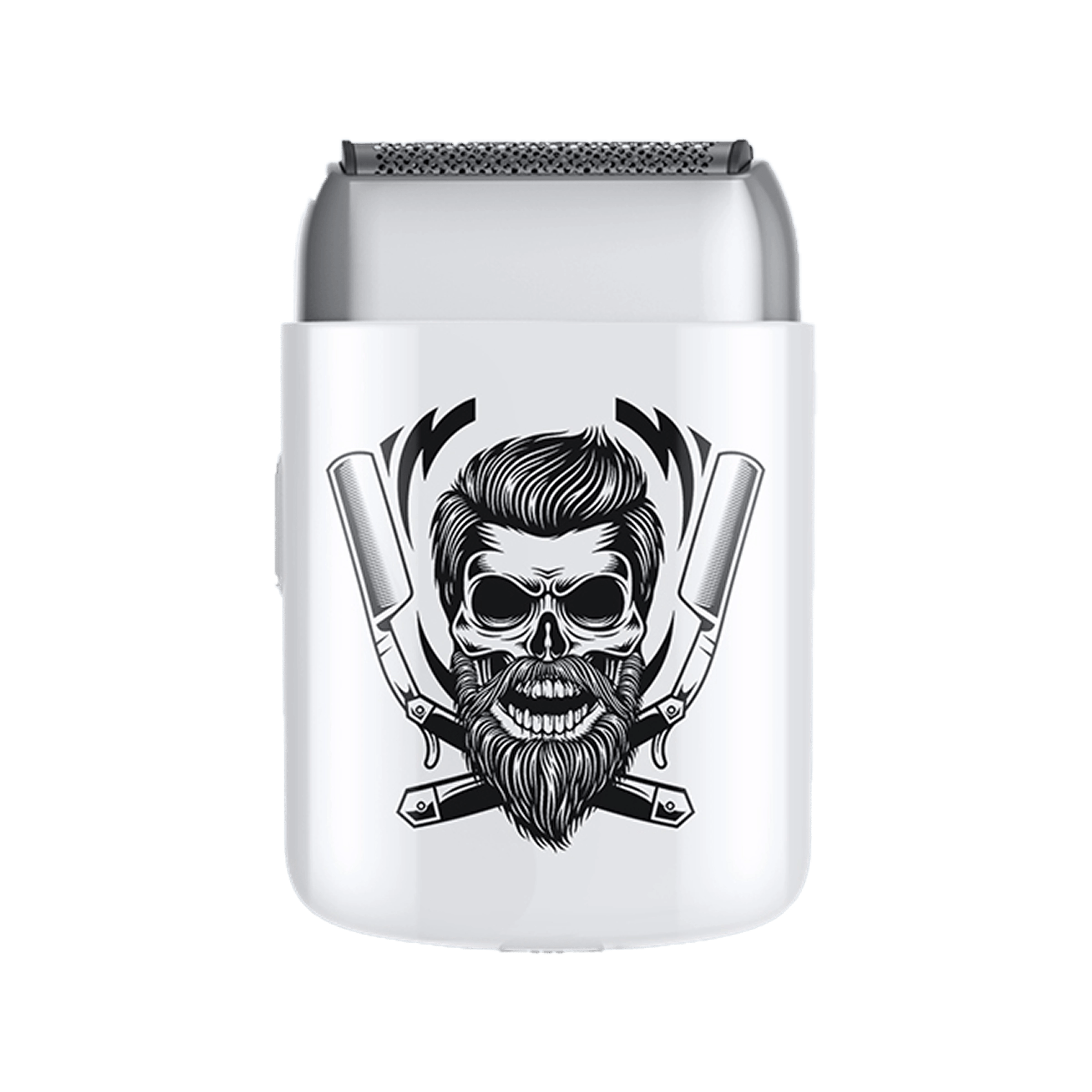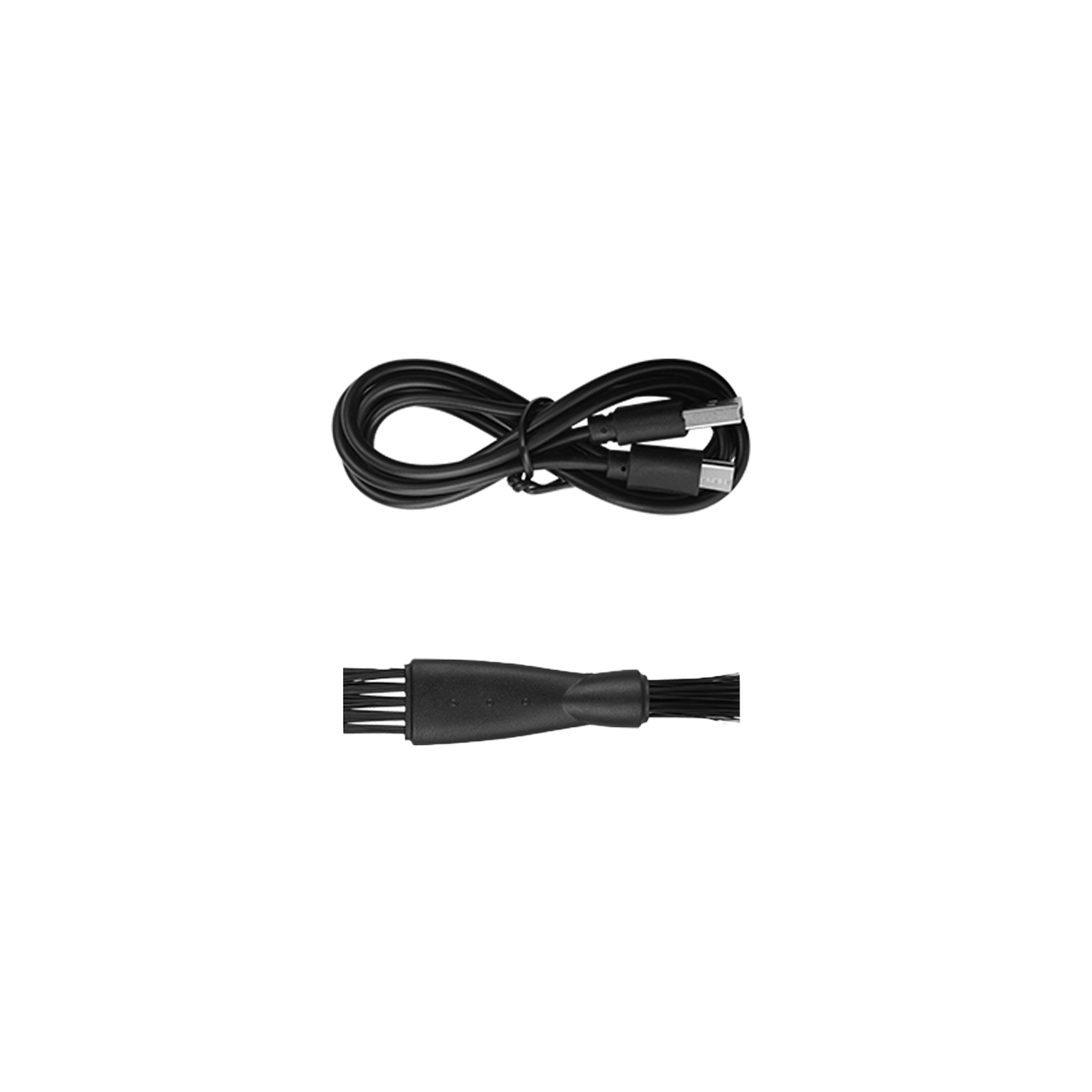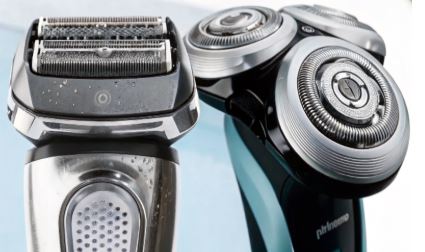A foil shaver is an electric razor that uses oscillating blades hidden beneath a thin, perforated metal foil to cut hair close to the skin. The foil's tiny holes capture hair and guide it to the blades that move back and forth rapidly, providing a smooth, close shave with less skin irritation than traditional razors. Foil shavers are ideal for sensitive skin and daily shaving routines.
What is a Foil Shaver? The Basic Definition
A foil shaver uses a protective metal screen over moving blades. This design differs completely from rotary shavers (circular heads) and traditional razors (exposed blades).
Key components:
- Perforated foil: Thin metal sheet with tiny holes that acts as a barrier
- Oscillating blades: Move back and forth rapidly beneath the foil
- Linear shaving head: Straight design for precise, controlled strokes
- Motor: Powers the high-speed blade movement
The foil shaver design ensures that your skin is protected from the cutting blades, which eliminates the risk of cuts and razor burn that come with traditional wet shaving.
Understanding how electric shaver technology evolved shows why foil shavers became popular for their balance of closeness and safety.

How Foil Shavers Actually Work
The mechanism is simpler than it looks. Here's what happens when you shave.
Step-by-step process:
- Hair enters the foil: As you glide the shaver over your skin, the foil's tiny holes capture individual hairs
- Foil lifts the hair: The perforated design lifts hair slightly away from skin for a closer cut
- Blades oscillate: Internal cutters move back and forth at high speed (up to 14,000 cycles per minute)
- Hair gets cut: As hair pokes through the foil holes, the moving blades slice it close to the skin
- Skin stays protected: The foil barrier prevents direct blade-to-skin contact
The foil barrier is crucial. It sits between the blades and your skin, preventing nicks and irritation while allowing a close shave. This makes foil shavers particularly good for people with sensitive skin conditions.
Quality electric foil shavers designed for daily use feature advanced foil designs with optimized hole patterns for maximum hair capture.
Key Characteristics That Define Foil Shavers
Several features distinguish foil shavers from other electric shavers.
Straight, linear design:
Foil shavers have straight shaving heads, not circular ones. This means you shave in straight lines—up, down, left, or right. You cannot use circular motions with a foil shaver, as this causes irritation and uneven results.
Very close shave:
Foil shavers provide a very close shave, often leaving skin feeling smooth. They're frequently recommended for achieving a "barber shop" close finish, especially for those with finer facial hair.
Skin protection:
The foil acts as a protective barrier, preventing the blades from directly contacting and potentially irritating the skin. This design significantly reduces razor burn and ingrown hairs.
Maintenance requirements:
The foil head is often removable, making it easy to clean and replace. Most foils need replacement every 12-18 months depending on usage.
Foil Shavers vs. Rotary Shavers vs. Traditional Razors
Understanding the differences helps you choose the right tool for your needs.
Foil shavers:
- Best for: Daily shaving, sensitive skin, precise lines
- Shaving motion: Straight strokes (up, down, side to side)
- Closeness: Very close, smooth finish
- Speed: Moderate—may need multiple passes
- Skin contact: No direct blade contact
Rotary shavers:
- Best for: Thick/coarse hair, head shaving, complex face contours
- Shaving motion: Circular motions
- Closeness: Close, but slightly less than foil
- Speed: Faster, covers more area quickly
- Skin contact: No direct blade contact
Traditional razors:
- Best for: Absolute closest shave possible
- Shaving motion: Straight strokes with the grain
- Closeness: Closest possible (cuts below skin level)
- Speed: Slowest, requires prep and care
- Skin contact: Direct blade contact (higher irritation risk)
For most people: Foil shavers offer the best balance of closeness, convenience, and skin comfort for daily facial shaving.
A versatile electric shaver kit for complete grooming provides the tools needed for both facial shaving and detail work.

What Are Foil Shavers Used For?
Foil shavers excel in specific grooming scenarios.
Primary uses:
- Daily facial shaving: Ideal for maintaining a clean-shaven look every day
- Sensitive skin shaving: Best choice for those prone to razor burn
- Precise detailing: The straight edge allows for trimming sideburns and creating clean lines
- Travel grooming: Compact, cordless models work great on the go
- Quick touch-ups: Fast maintenance between full shaves
Specialized applications:
Some people use foil shavers for body hair, though results vary. The straight head design works well for arms and legs but may struggle with contoured areas. For pubic hair, only use foil shavers specifically designed for sensitive areas with proper guards.
What foil shavers DON'T work well for:
- Trimming longer beards (use a trimmer first)
- Head shaving with complex contours (rotary often better)
- Shaping intricate beard designs (dedicated trimmer recommended)

Advantages of Using Foil Shavers
Foil shavers deliver several key benefits that make them popular for daily grooming.
Precise, close shave:
The oscillating blade mechanism provides precision cutting. You get a well-groomed appearance with clean lines and even results.
Great for sensitive skin:
The foil design is gentle on skin, resulting in lower risk of irritation, razor burn, and ingrown hairs compared to traditional razors. Many dermatologists recommend foil shavers for patients with sensitive skin.
Best for detailing:
The straight cutting edge allows for precise work on facial hair, sideburns, necklines, and hard-to-reach areas. You have excellent control for creating sharp, defined lines.
Wet or dry capability:
Many modern foil shavers work for both wet and dry shaving, giving you flexibility in your routine. Wet shaving with shaving cream often provides even better results for sensitive skin.
Disadvantages and Limitations
No tool is perfect. Here's what to consider before choosing a foil shaver.
Limited flexibility:
Foil shavers have a harder time contouring to your face compared to rotary shavers. The straight head design can miss spots on complex facial angles. This may result in uneven results or missed hairs.
Slower shaving experience:
Foil shavers often require multiple passes over an area to achieve the closest shave. If you prioritize speed over precision, a rotary shaver might suit you better.
Requires specific technique:
You must use straight strokes—no circular motions allowed. This takes some adjustment if you're switching from a rotary shaver or traditional razor.
Foil replacement costs:
The foil and blades need replacement every 12-18 months, typically costing $30-60. Factor this into your long-term budget.
How to Use a Foil Shaver Properly
Correct technique maximizes results and prevents skin irritation.
Proper shaving technique:
- Clean, dry face (or use shaving cream for wet shaving)
- Hold shaver at 90-degree angle to your face
- Use straight, deliberate strokes against the grain
- Apply gentle pressure—let the shaver do the work
- Work systematically: cheeks, neck, chin, upper lip
- Make multiple passes if needed, but don't press harder
Best practices:
- Shave against hair growth direction for closest results
- Keep the foil flat against your skin
- Don't use circular motions
- Clean the foil after every 2-3 uses
- Apply light pressure only
Learning advanced electric shaving techniques helps you get better results and avoid common mistakes that cause irritation.
Maintaining Your Foil Shaver
Regular maintenance extends lifespan and ensures optimal performance.
After each use:
- Turn off and unplug shaver
- Tap out loose hair
- Brush the foil with the included cleaning brush
- For waterproof models, rinse under running water
- Let air dry completely
Weekly maintenance:
- Remove foil head completely
- Clean thoroughly with brush or water
- Check for damage to the foil
- Dry all components before reassembling
Every 12-18 months: Replace the foil and cutter block. Worn foils lose effectiveness and can cause skin irritation. You'll notice pulling or tugging when replacement is needed.
Pro tip: Keep spare foils and cutters on hand. When performance drops, you can swap immediately rather than waiting for delivery.
Explore quality options at Bestbomg's electric shaver headquarters featuring models with easy-maintenance designs and readily available replacement parts.
Frequently Asked Questions
What is a foil shaver used for?
Foil shavers are primarily used for daily facial shaving and maintaining a clean-shaven appearance. They excel at creating precise lines for sideburns and neck edges. Many people also use them for sensitive skin areas where traditional razors cause irritation.
Are foil shavers better than razors?
For daily convenience and skin health, yes. Foil shavers cause less irritation, require no shaving cream (though you can use it), and are faster for routine maintenance. Traditional razors provide a slightly closer shave but require more time, prep, and carry higher irritation risk.
What is the difference between a foil shaver and a trimmer?
Foil shavers cut hair extremely close to the skin for a smooth finish. Trimmers leave stubble (usually 0.5mm-10mm) and are designed for maintaining beards, not clean shaving. Use trimmers for beard shaping and foil shavers for smooth, clean-shaven results.
Can you use foil shaver on pubes?
Yes, but only with models designed for sensitive areas. Look for waterproof shavers with hypoallergenic foils and guards. Pre-trim longer hair with clippers first to avoid painful tugging. Regular facial foil shavers aren't designed for this and may cause significant discomfort.
Can I wet shave with a foil shaver?
Many foil shavers support wet shaving, but check your model's specifications first. Waterproof models work great with shaving cream or gel, often providing better results for sensitive skin. Non-waterproof models are for dry use only and will be damaged by water.
Which razor is best for private parts male?
Choose body groomers specifically designed for sensitive areas, not facial foil shavers. Look for models with safety guards, rounded tips, and waterproof designs. Brands make dedicated body trimmers with features that reduce nicking risk in delicate areas.
Get professional shaving results at home. Discover premium foil shavers and grooming tools at Bestbomg's complete shaving solution store designed for comfort, closeness, and lasting performance.
Read more
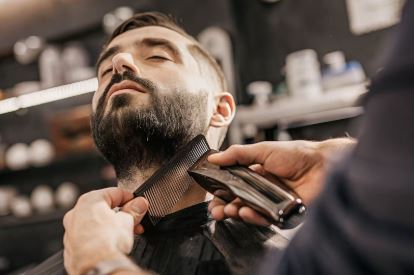
How Long Do Hair Clippers Last? Complete Lifespan Guide
Hair clippers can last anywhere from 5 to 20+ years, depending on quality, usage, and maintenance. Professional-grade clippers with proper care often last 10-15 years, while budget models may only ...

Why Are My Clippers Pulling Hair? 7 Common Causes and How to Fix Them
Your clippers should glide smoothly through hair without tugging or snagging. If they're pulling instead of cutting, it's frustrating and painful. The good news? This problem is usually easy to fix...
